We could lavish superlatives on Islamorada all day long, but there’s no need to. It’s more than enough to tell you that this gem has been crowned as the “Sportfishing Capital of the World.” This speaks volumes about what your deep sea fishing in Islamorada is like. With the Gulf of Mexico and the Atlantic Ocean on its doorstep, Islamorada is the crib of sportfishing.

Situated between Key Largo and Marathon, Islamorada is in the heart of the Florida Keys. This means unsurpassed angling opportunities and an unforgettable deep sea fishing experience for you. While challenging, a bluewater pursuit isn’t only for seasoned anglers. And here lies the beauty of Islamorada deep sea fishing adventures.
To help you understand what awaits in the deep, we’ll outline the most common catches below. Besides fish species, we’ll equip you with knowledge about the latest rules and regulations, fishing techniques, and hotspots. Without further ado, let’s see what deep sea fishing in Islamorada is all about.
Top Islamorada Deep Sea Catches
With a multitude of trophies at your fingertips, deep sea fishing in Islamorada is a dream come true for all avid anglers. These warm waters are home to a variety of prized catches. Be it a record-breaking Billfish or an ever-wanted Snapper, Islamorada is your go-to fishery. In the following section, we’ll cover the most prominent fish species that are on everyone’s radar.
Blackfin Tuna
There isn’t a more distinguished member of Islamorada’s Tuna family than Blackfin Tuna. They’ve made a name for themselves by being incredible wrestling opponents and ferocious swimmers. While they’re the smallest among their Tuna relatives, they’re fast and furious. Small but mighty, Blackfin Tuna are must-fight locals when deep sea fishing in Islamorada.

Blackfin Tuna are permanent residents of the Florida Keys. This means they’ll be around any time you visit Islamorada. However, your chances of landing impressive specimens are higher during spring and fall. Your odds at reeling in a keeper are further boosted by trolling and chumming combo. Casting flies, feathers, and live bait work wonder with Blackfin Tuna, too.
Not only are Blackfin Tuna excellent sportfish, but they’re also exceptionally tasty. So, after a long day of battling them, it’s time for your palate to feel what the buzz is about. Apart from Blackfin Tuna, you may cross paths with Yellowfin, Bluefin, and Skipjack Tuna as well.
Wahoo
Unlike Tuna, Wahoo prefer to be alone. You won’t find them accumulating in schools together, so you’ll need to cover a larger area to locate them. Luckily, Islamorada’s waters are abundant in these speedsters, and finding them shouldn’t be difficult. Plus, trolling can help with luring them your way. But why should you consider pursuing Wahoo in the first place?
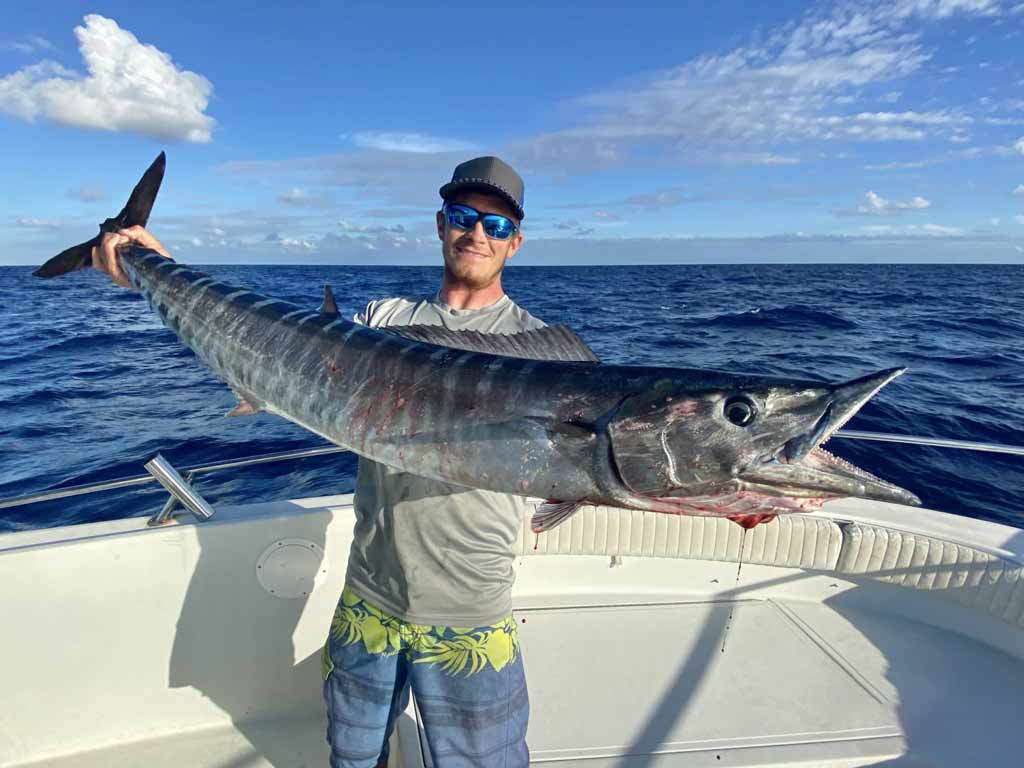
Testing your skills against them, of course. Wahoo are notorious for their unpredictable runs and direction shifts. The pure thought of outsmarting them is a perfect reason for going after them. If you’d like a bragging story of your own, rise up with the lark because Wahoo are particularly active in the morning. The early bird catches the… well, Wahoo. So rise and shine!
Mahi Mahi
No deep sea fishing line-up is complete without Mahi Mahi. They’re an integral part of any offshore quest in Florida. Islamorada is no exception. These gorgeous-looking acrobats are in demand due to their sportfish traits and finger-licking meat. Action-packed trips and mouth-watering sashimi are guaranteed when Mahi Mahi are in the picture.
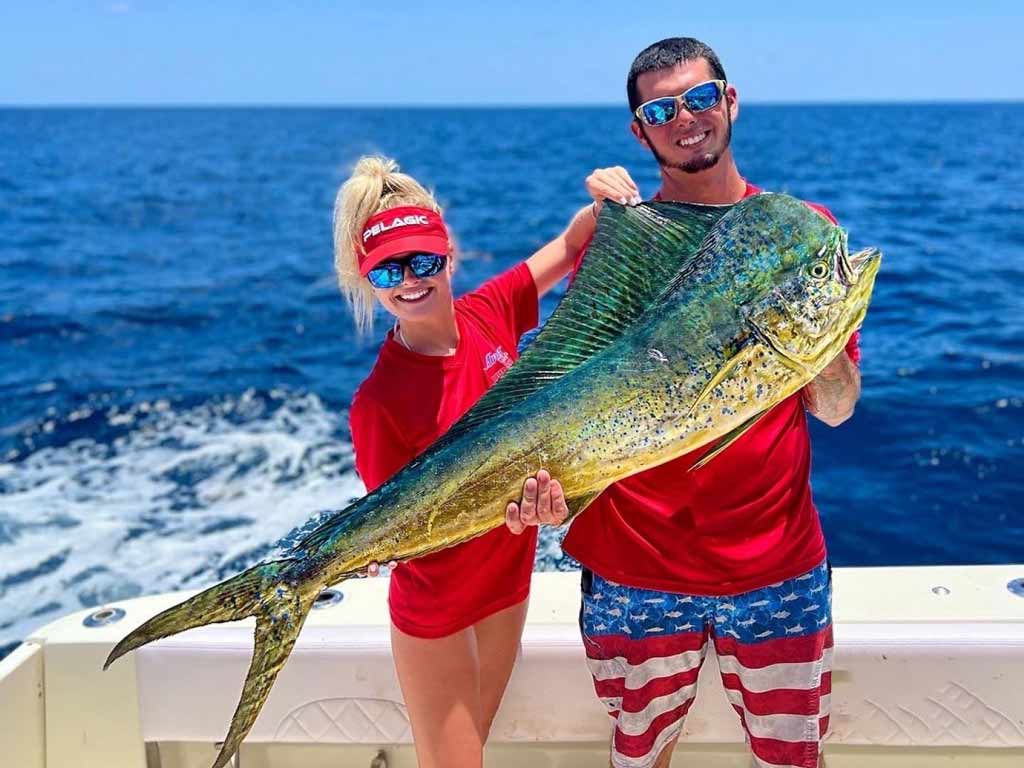
The blazing summer sun marks the beginning of the Mahi frenzy. These speedsters also tend to swim in groups, so don’t be surprised if you unlock a fishing bonanza. Adult Mahi love squid and ballyhoo, but won’t complain if you give them artificial lures or spoons either. Trolling and chumming prove to be a prolific duo when targeting Mahi Mahi, as well.
Sailfish
We saved the best for last – the one and only Sailfish! Muscular and powerful, Sailfish are the ultimate adversaries. They’re world-renowned for their spectacular jumps and strong-willed nature. Sailfish won’t surrender without putting up a resistance. It’s no wonder these intimidating beasts are Florida’s official saltwater fish. As such, they deserve a special place on your deep sea fishing bucket list.
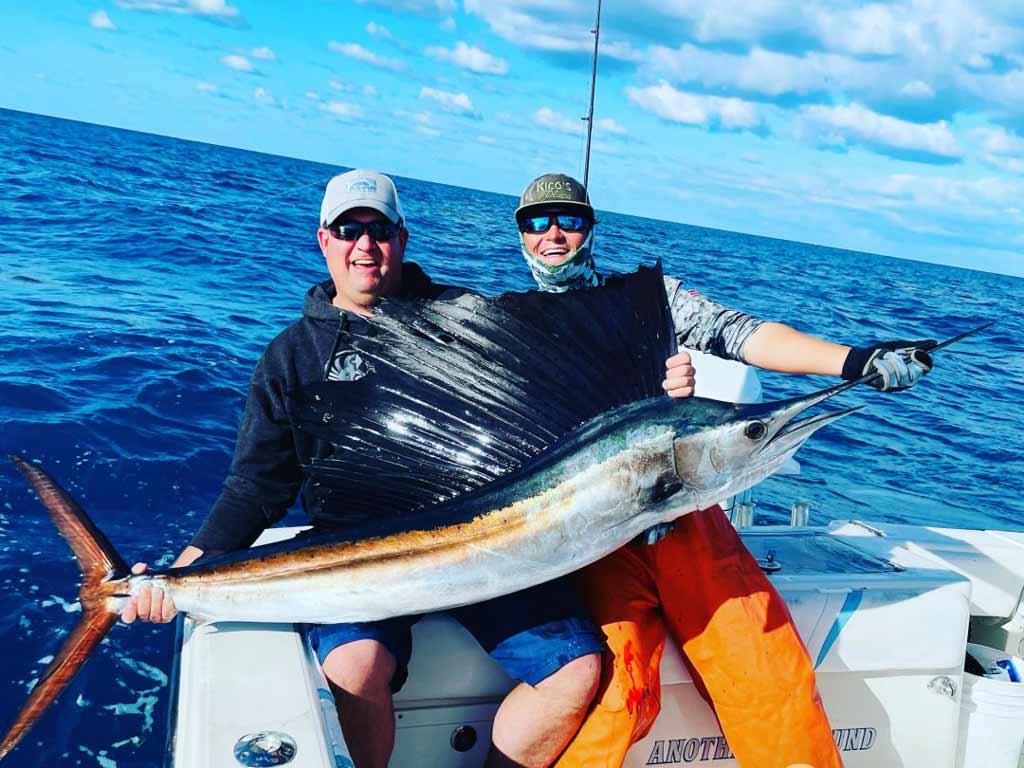
While Sailfish may approach the shallows in summer to spawn, these leviathans abide in the clear offshore waters. You can spot them while they’re swimming closer to the surface and attract them with whole mullet or blue runner baits. Winter is the perfect time for a clash with these titans. Gear up with the proper equipment and patience – you’ll need plenty of both!
… And More!
It’s obvious that deep sea fishing in Islamorada isn’t only about the above-mentioned headliners. Since you’ll have access to both the Gulf of Mexico and the Atlantic Ocean, there won’t be a shortage of fish species. Depending on your preferences, there will always be something to grace the end of your line. Be they bottom-dwellers or surface lovers, you’ll be in for a treat.
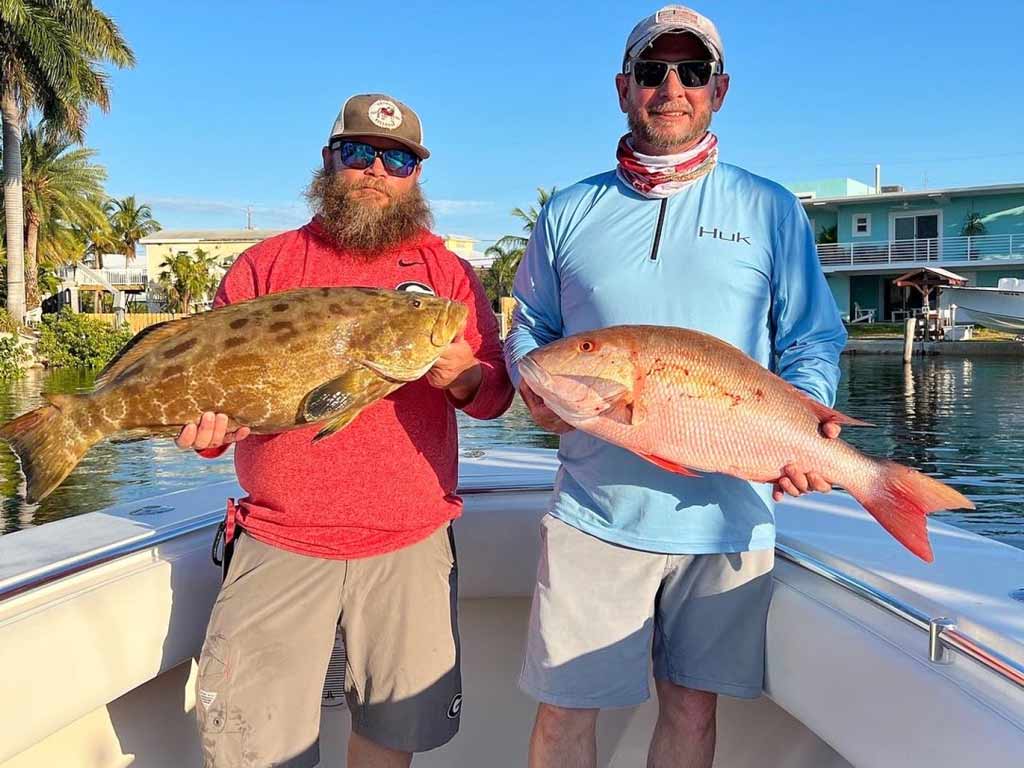
Snappers and Groupers are favorite bottom feeders among anglers. Snappers in particular are sought-after for their delicious meat and admirable game fish qualities. If you’re more into bluewater behemoths like Sailfish, don’t worry, there are more Billfish around. Marlin, Swordfish, and Spearfish are just a few of the many trophy catches that call these waters home.
How to Go Deep Sea Fishing in Islamorada
Deep sea fishing is impossible without embarking on an offshore journey. In other words, you can’t enter a race with big game fish without a vessel. Fortunately, Islamorada deep sea fishing charters are plentiful. Not only will you be able to find a boat that meets your needs, but you’ll also team up with a top-tier captain. Both are equally important if you want to have the time of your life.

Booking a local charter operator to help you land your dream catch is the best decision you can make. These guys possess first-class equipment, knowledge, and the skills necessary to duel with the above-mentioned ocean monsters. Speaking of skills, let’s take a look at what angling techniques you can expect to utilize while deep sea fishing in Islamorada with a captain.
Trolling
If you were to choose only one fishing method for drawing big game your way, you’d opt for trolling. It’s applicable to a variety of fish species and it’s suitable for professionals and novices alike. Trolling will ensure you don’t end up empty-handed. Plus, you can combine it with other fishing techniques to maximize your chances of coming out glorious from your hunt. But how does it work?
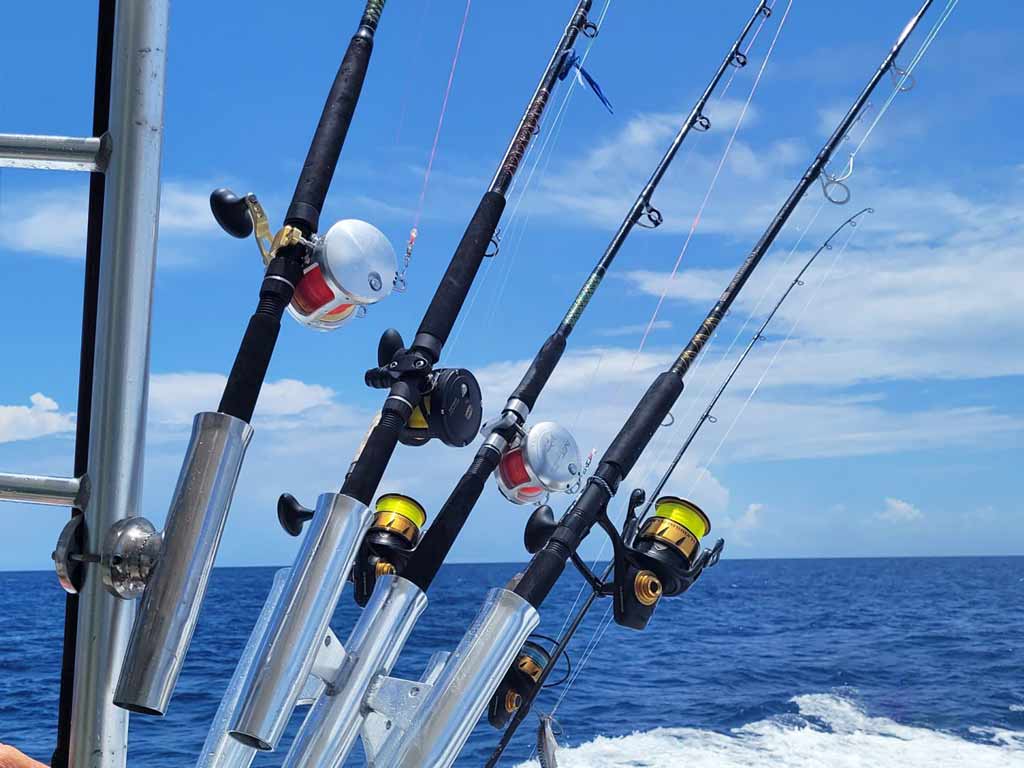
The underlying idea of trolling is to imitate the prey of the fish you’re targeting. Once you and your captain find the fishery you’d like to explore, it’s time to grab the attention of your desired catch. The setup is always the same – the lines are placed behind a moving boat. Speed and bait, however, change depending on the fish you’re trying to lure.
Sailfish, for example, are interested in high-speed trolling with the whole mullet or blue runner in the water. Mahi Mahi, on the other hand, are intrigued by a motion that resembles a flying fish’s jumps. This means you’ll have to adjust your speed to mimic this behavior. But in the end, you’re likely to end up victorious.
Bottom Fishing
Unlike trolling, which aims to attract surface swimmers, bottom fishing is all about species that tend to stay closer to the seafloor. Additionally, bottom angling isn’t about the speed as much as it’s about the bait and the way you present it. You can drop your bait and wait for the fish to bite. Or, you can spice your approach up with jigging and hook some nice dinner in no time.
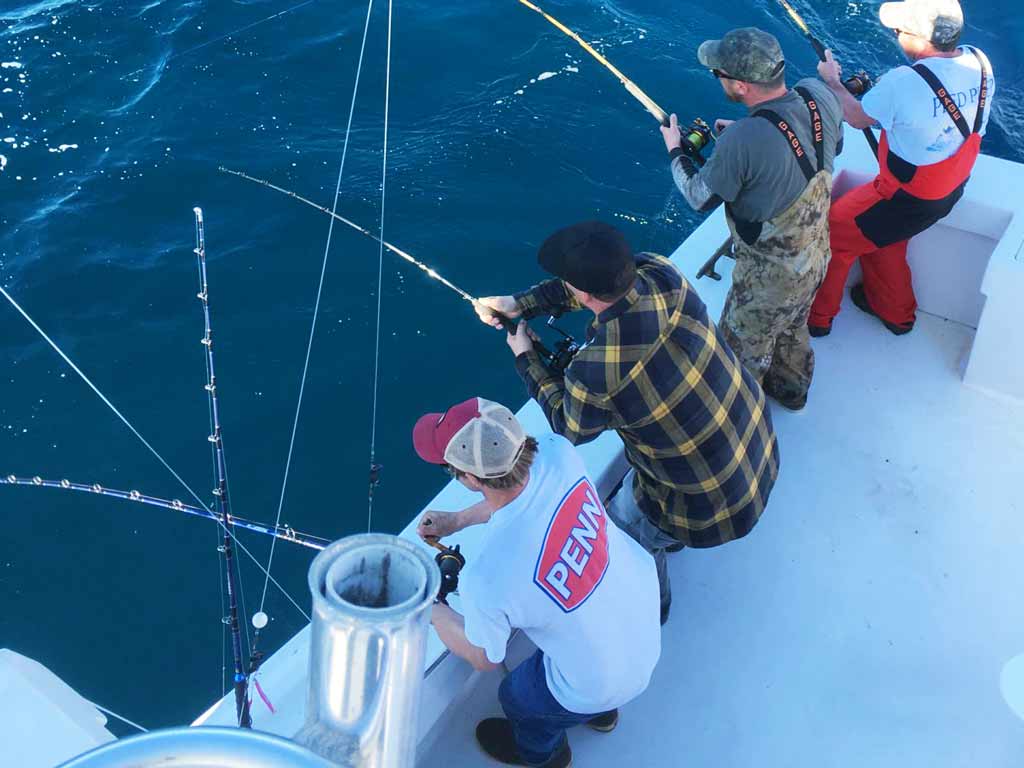
Snappers and Groupers are usually the main focus when engaging in bottom angling. They dominate the area around reefs, and are always in search of food. Frozen squid will be a tempting meal for them. Especially if you throw it at them. We wouldn’t be able to resist such an inviting lunch served in front of us, so how could they?
Fly Fishing
Believe it or not, bluewater monsters on the fly are the big thing in Islamorada. It’s the ultimate challenge. While fly fishing is geared more toward those who have already mastered this art, there’s room for inexperienced anglers to try their luck, too. Mahi Mahi are beginner-friendly targets. Meanwhile, Sailfish and Marlin are reserved for professionals and adrenaline seekers.

Sailfish on the fly is, without a doubt, the boss level of the deep sea fishing game in Islamorada. You can mix it with low-speed trolling. Trolling live ballyhoo captivates a Sailfish’s attention, and taking it away prepares the Sailfish for your fly fishing ploy. After getting a mere taste of the prey, Sailfish is ready to engage in a fly fishing struggle with you.
Where to Go Deep Sea Fishing in Islamorada
When you have the Gulf and the Atlantic at your disposal, the possibilities are endless. The entire area becomes a huge angling playground. Premium fisheries are scattered all over the region. You can hit the jackpot just a couple of miles from the shore! In the following paragraph, we’ll share several deep sea fishing hotspots to get you started.
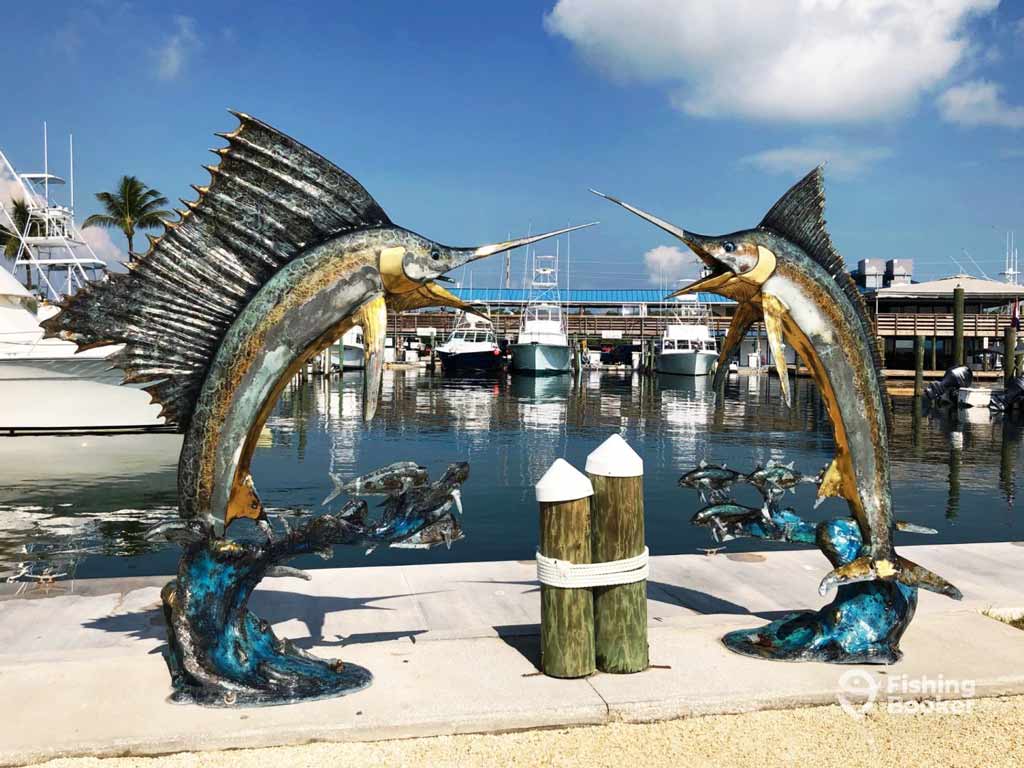
- Marinas. The Sportfishing Capital of the World boasts five-star marinas and top-notch fishing charters. Safe Harbor Marina, Whale Harbor Marina, and Bud N’ Mary’s Fishing Marina are prime departure points for exploring both the Gulf and the Atlantic. Bear in mind that securing your spot on one of the first-rate charters means booking them well in advance.
- Pickles Reef. The Atlantic side of Islamorada is home to Pickles Reef. This unique blend of natural and artificial reefs is a gathering place for numerous deep sea species. Barracuda, Blackfin Tuna, and Yellowfin Tuna are just a few of the many passersby who swim around here.
- Conch Reef. Next to Pickles Reef, you’ll stumble upon another deep sea fishing heaven. While fishing in Sanctuary Preservation Areas is strictly prohibited, you can catch and release by trolling near Conch Reef. You can expect the same fish as in the neighboring Pickles Reef.
- Islamorada Hump. Move 15 miles offshore and the Hump will be your new go-to fishery. This large seamount will treat you to Mahi Mahi, Tuna, Wahoo, and Sailfish. You can employ a variety of fishing techniques from bottom angling, trolling, and drift fishing, to vertical jigging on this ground.
Anything else I need to know?
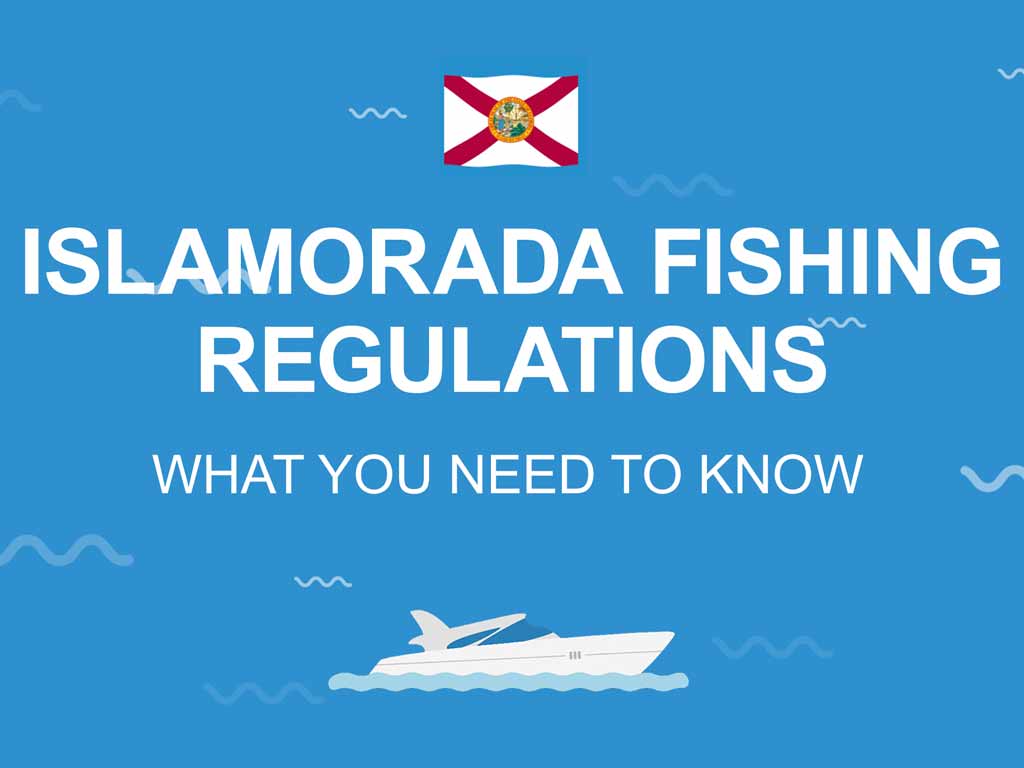
Knowing rules and regulations before heading out is important. First of all, you need a license if you aren’t fishing with a certified captain. You can buy it online or in person at registered retailers. Should you need more information on how to go about your fishing license, check out our guide.
While Islamorada is a year-round angling destination, not all species are up for grabs throughout the year. The Red Snapper season changes annually and lasts only for a couple of weeks. Meanwhile, some Grouper and Shark species are entirely off-limits.
Apart from the permits and seasons, deep sea fishing in Islamorada has bag and size restrictions, too. Make sure you’re familiar with the latest laws surrounding your offshore hunt before you cast a line in these waters.
Islamorada: The Deep Sea Fishing Capital of the World

Superb angling and water sports are synonymous with Islamorada. This tropical community is fishing-oriented and you can easily prove this by deep sea fishing in Islamorada for your next vacation. Besides big game trophies, you’ll enjoy scenic beaches, otherworldly sunsets, and crystal clear waters. Islamorada is every avid fisherman’s haven. So, to our fellow anglers out there – don’t miss out on the opportunity to experience firsthand what this slice of heaven has to offer!
Have you ever been deep sea fishing in Islamorada? What did you catch? Any hotspots to share with us? Hit the comment button below to tell us all about your Islamorada angling experience!
The post Deep Sea Fishing in Islamorada: The Complete Guide appeared first on FishingBooker Blog.
https://ift.tt/QFMUl7h
0 Comments
Enregistrer un commentaire